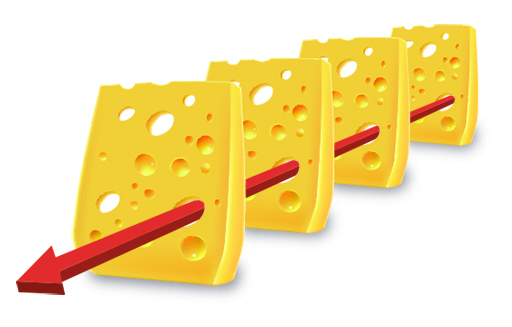 In his book ‘The Human Contribution’, James Reason describes the ‘Swiss cheese effect’. Every step in a process has the potential for failure, to varying degrees. It has some weaknesses or holes in it. The ideal system is analogous to a stack of slices of Swiss cheese.
In his book ‘The Human Contribution’, James Reason describes the ‘Swiss cheese effect’. Every step in a process has the potential for failure, to varying degrees. It has some weaknesses or holes in it. The ideal system is analogous to a stack of slices of Swiss cheese.
Consider the holes to be opportunities for a process to fail, and each of the slices as a ‘defensive layer’ in the process. An error may allow a problem to pass through a hole in one layer, but in the next layer the holes are in different places, and the problem should be caught. Each layer is a defence against a potential error impacting the outcome.
For a catastrophic error to occur, the holes need to align for each step in the process to be defeated. If the layers are set up with all the holes lined up, this is an inherently flawed system that will allow a problem to progress all the way through to adversely affect the outcome.
Each slice of cheese is an opportunity to stop an error. The more defences you put up, the better. And the fewer holes, the better the system and the smaller the holes, the more likely you are to catch or stop errors.
